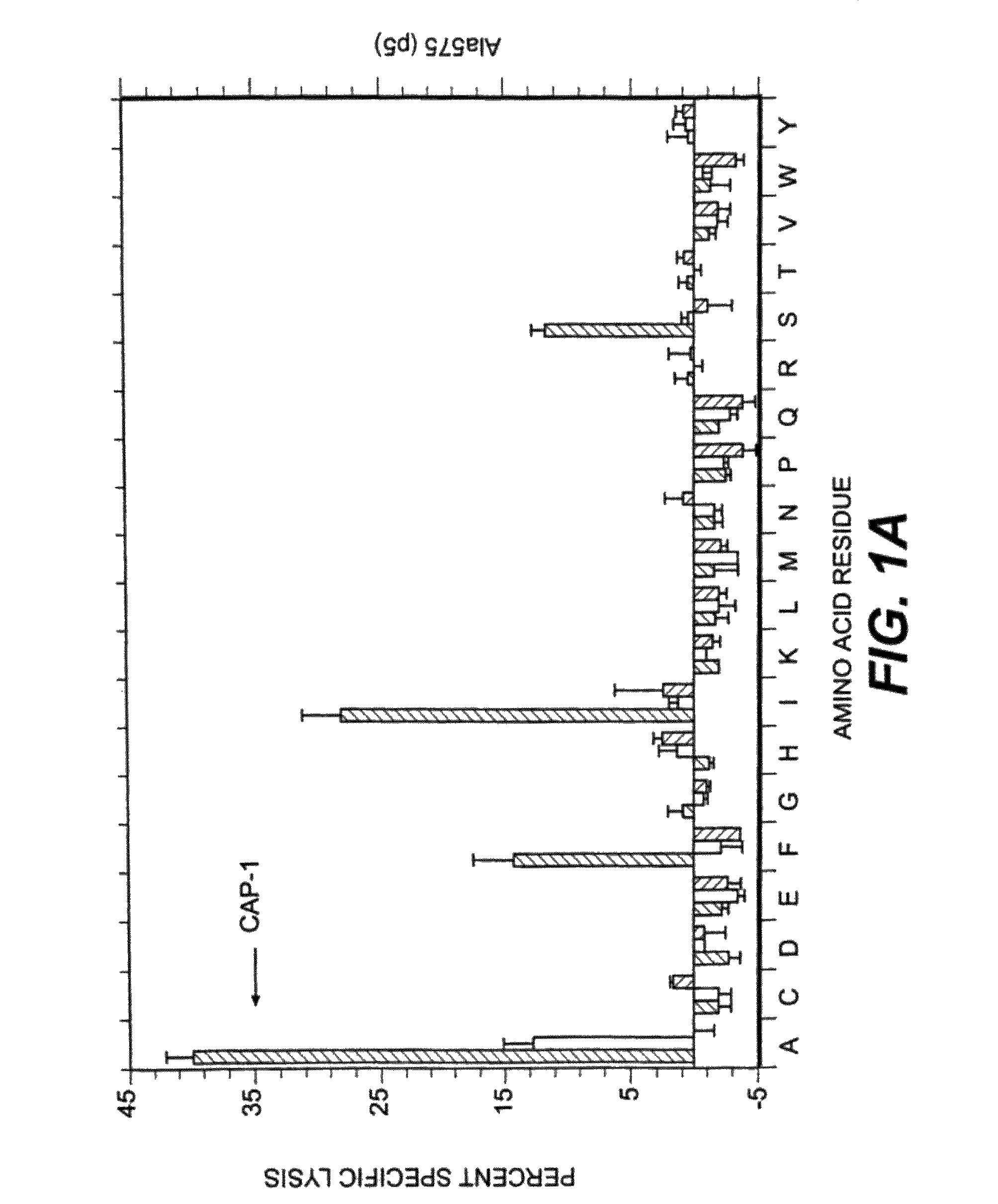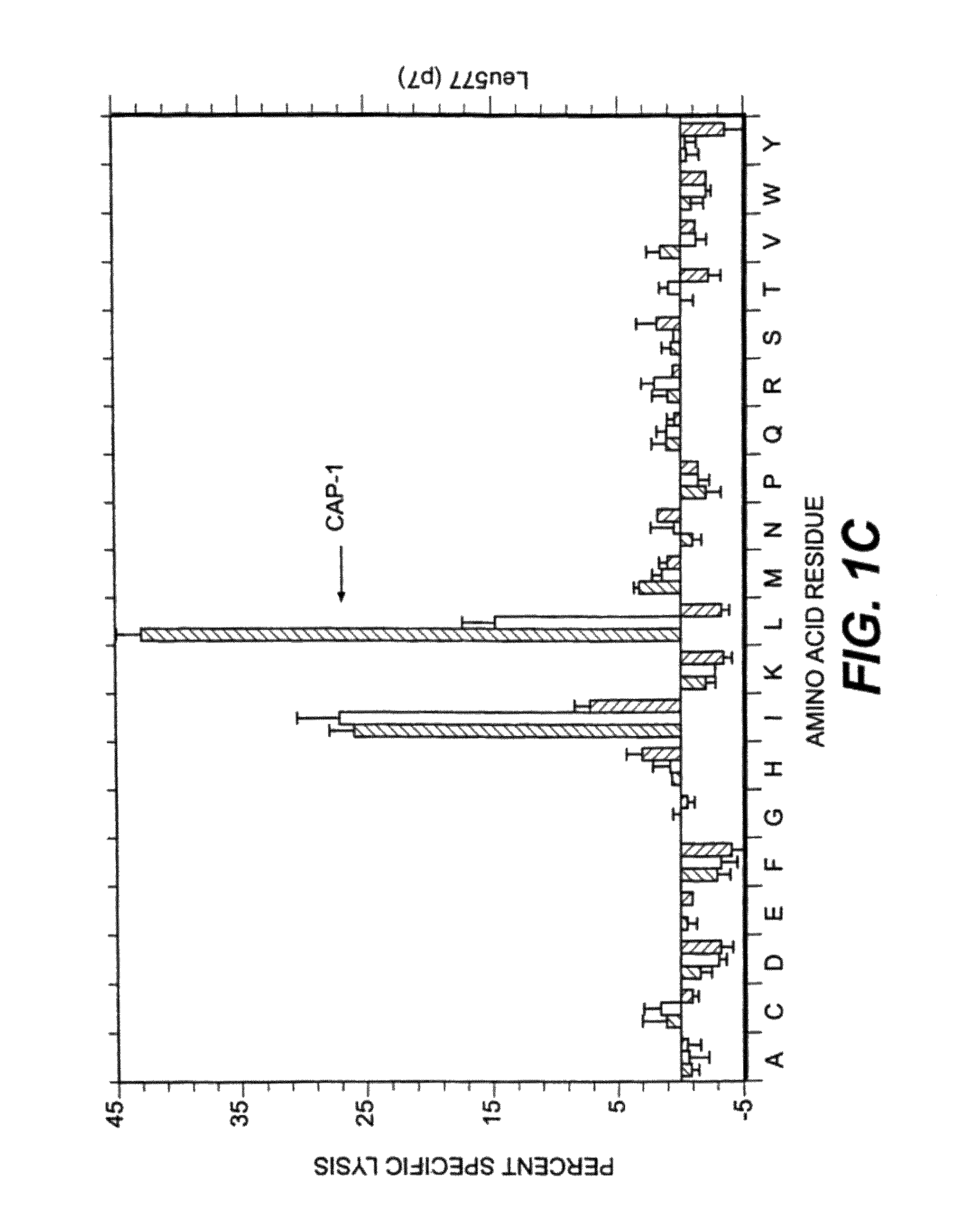Agonist and antagonist peptides of carcinoembryonic antigen (CEA)
a technology which is applied in the field of agonist and antagonist peptides of carcinoembryonic antigen (cea), can solve the problems ofcea-specific immune response of rv-cea, which suffers from drawback, and achieves the effect of reducing or eliminating cea-specific t-cell activation and killing
- Summary
- Abstract
- Description
- Claims
- Application Information
AI Technical Summary
Benefits of technology
Problems solved by technology
Method used
Image
Examples
examples
CAP1 Substituted Peptides
[0097]Several factors were considered in deciding which positions to examine for effects on T cell activity. Sequencing and mapping experiments have defined a binding motif in which position 2 and the C-terminal (position 9 or 10) are critical for peptide presentation by HLA-A2 (for review, see 31). In addition, Tyr at position 1 has been identified as an effective secondary anchor (20, 32). Since the CEA peptide CAP1 already has the preferred amino acids at these three positions these residues were not altered. Instead, we focused attention on residues predicted to interact with the TCR in the hope of finding analogs that would stimulate human CAP1-specific cytotoxic T cells. X-ray crystallographic studies of several peptides bound to soluble HLA-A2 suggest that all binding peptides assume a common conformation in the peptide binding groove (33). When five model peptides were examined, residues 5 through 8 protrude away from the binding groove and are poten...
PUM
| Property | Measurement | Unit |
|---|---|---|
| volume | aaaaa | aaaaa |
| concentration | aaaaa | aaaaa |
| concentration | aaaaa | aaaaa |
Abstract
Description
Claims
Application Information
 Login to View More
Login to View More - R&D
- Intellectual Property
- Life Sciences
- Materials
- Tech Scout
- Unparalleled Data Quality
- Higher Quality Content
- 60% Fewer Hallucinations
Browse by: Latest US Patents, China's latest patents, Technical Efficacy Thesaurus, Application Domain, Technology Topic, Popular Technical Reports.
© 2025 PatSnap. All rights reserved.Legal|Privacy policy|Modern Slavery Act Transparency Statement|Sitemap|About US| Contact US: help@patsnap.com



